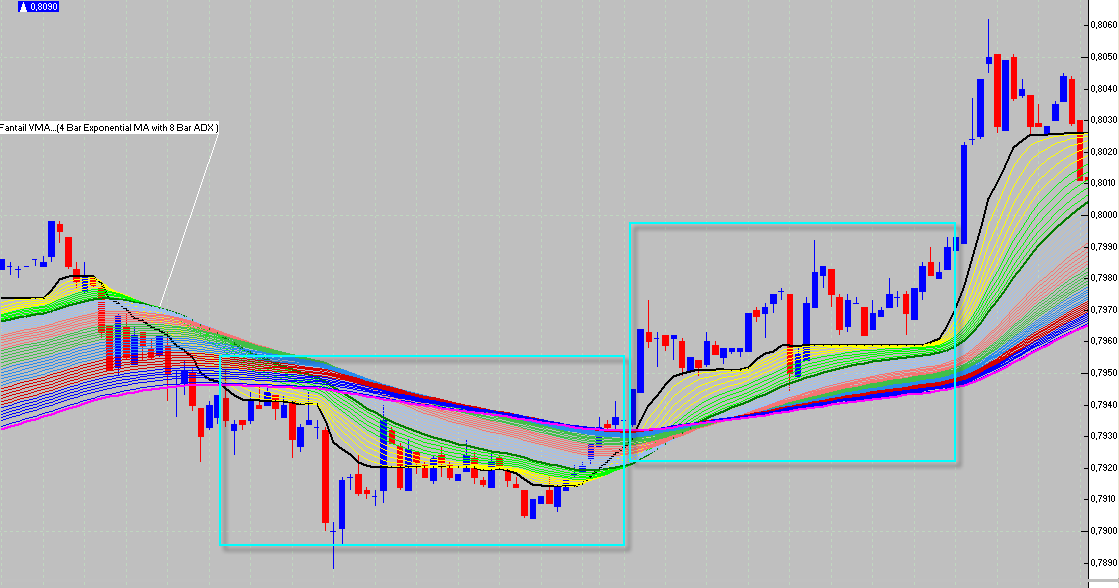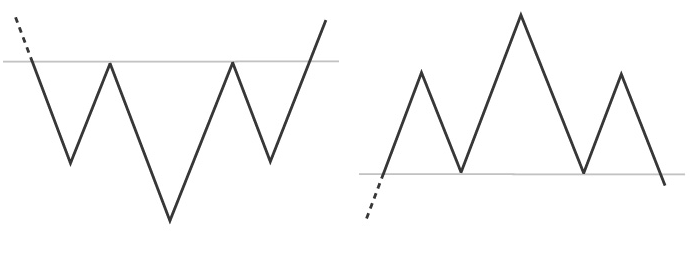Advantages in Trend Trading Traders Laboratory
Post on: 15 Август, 2015 No Comment

Once we start to look at technical price analysis from an academic perspective, it can be difficult to remember some of the foundational aspects of the practice that got us started in the first place. The idea of what makes a trend creates a basis for most of the more “advanced” technical analysis techniques that follow. So, it is surprising that so many active forex traders dismiss trend analysis as overly simplistic and only worthy of limited attention. But the simplicity of any price analysis method is not something that should be immediately disregarded as a negative, and trend analysis is something that should be used by traders of all experience levels. The ability to understand what makes a trend can bail a trader out of a strategy that is imperfect and help prevent the excessive losses that can break a trading account.
“The Trend is Your Friend”
The most commonly used phrase in technical analysis is “the trend is your friend.” Whether your strategy agrees with it or not, the phrase has stood the test of time because it does form the building blocks for the way most people view price activity. There are many traders that use trends as an opportunity to work in reverse (using contrarian strategies), but even when thats the case, you will still need to have an understanding of how trends are defined in order to know what you are working against. Here, we will look at some of the benefits of trend-based strategies so that investors can use these ideas (for or against) when establishing new positions.
Trends and Imperfect Strategies
There will be many cases where an alternating strategy will fail against an uptrend or downtrend. When markets are bullish the majority of the price momentum is set in a clear direction and this is the main argument trend traders will use to base their positions. Trading in the direction of the majority of the market’s momentum allows you to focus on other aspects of your strategy (such as stop loss levels and profit targets).
This also allows you an added advantage when using a strategy that is less than perfect. When trend trading, the timing of your exact entry isn’t as important (when compared to contrarian or swing strategies). Of course, this does not mean that trend trading will result in gains in all cases. But when using these methods, you will gain some protection against the inherent flaw seen in any strategy and the exact time of exits and entries becomes less critical because most of the market is already on your side. In recent months, one of the stronger trend instances have been seen in the JPY pairs (as carry trades become more popular). The activity in these pairs has shown significant rebounds from long term lows, essentially suggesting that a new uptrend is in place.
Combining Trend Moves with Indicators
Once your underlying trend direction is identified (higher lows and higher highs vs. lower lows and lower highs), some of the less commonly used indicators can be added as a way of getting an edge on the rest of the trend trading market (where traders tend to focus on many of the same charting tools). One example of a less commonly used (yet effective) market indicator is the Commodity Channel Index (CCI). Helping remove some of the difficulty of timing entries in a trend, the CCI is an oscillator used to determine the strength or weakness in cyclical trends. The CCI helps traders identify price activity that has reached extreme points (become overbought or oversold) by quantifying the relationship between prices, moving averages, and deviations that are typically seen relative to the moving average. In the attached chart, we can see that rallies are expected once the indicator falls below -100, whereas declines are expected after the reading rises above +100.
The CCI cannot guarantee 100% success even used in conjunction with a forceful trend. But when, for example, a strong uptrend is in place, buyers are more likely to enter the market when prices have become oversold relative to their near term averages. One of the biggest problems seen when trend trading is the fact that it is difficult to “buy low and sell high.” Looking for oversold activity is one way of combating this problem as it gives you an opportunity to capitalize on short term reversals within the larger trend. When strong trends are seen, you will usually have multiple opportunities to enter and re-enter, and using the CCI is one way to find these opportunities.
Choosing Your Markets

If trends make up the majority of market price activity, we will need to take some trading opportunities while dismissing others. The main focus, at all times, should be in finding which price trend will allow you capture the most pips at any given time. If you are looking to implement a contrarian strategy, the argument can be made that there is greater opportunity in a reversal (became the previous trend made prices too expensive or cheap). But this is only the case when a trend has actually reached its end. When you align yourself with the direction of the trend (and choose your markets based on underlying strength), your positions are exposed to larger pip potential and reduced possibilities for losses.
Conclusion: Turn the Odds in Your Favor Until Reversals are Seen
When looking at trend-trading strategies, there are several advantages that allow traders to turn the odds in their favor and to protect against the flaws that are inevitably present in any trading system. As long as a trend is in place, there is an enhanced potential for gains as most of the market is in agreement with the positions you will be taking. The first step is to identify the main trend direction and, in many cases, this will not be immediately apparent. But when this is the case, it is better to look for other opportunities, as much more money can be made after the most obvious trending moves are seen.
The forex market has an impressive selection of available currency pairs to trade (even when using some of the smaller brokers), so there are always alternative options when your chosen pair is not expressing clear trend activity. For this reason, it is important to filter your signals in ways that allow you to only focus on those pairs with the strongest trends (and the best potential for gains). For positions that are already open, it is important to watch for counter-trend reversal signals to either stop out the position or to take profits.
At some stage, even the strongest trends will come to an end as uptrends turn into downtrends and vice versa. The best indication of these changes when an uptrend fails to proceed with higher highs and higher lows (momentum stalls too early when attempting new highs, or support levels break). In a downtrend, this would mean prices fails to proceed with lower highs and lower lows (downside momentum stalls too early when attempting to push to new lows, or resistance levels break). Other than this, trading rules can be altered but the central goal is to find the most obvious examples of a trend before any trades are placed.














